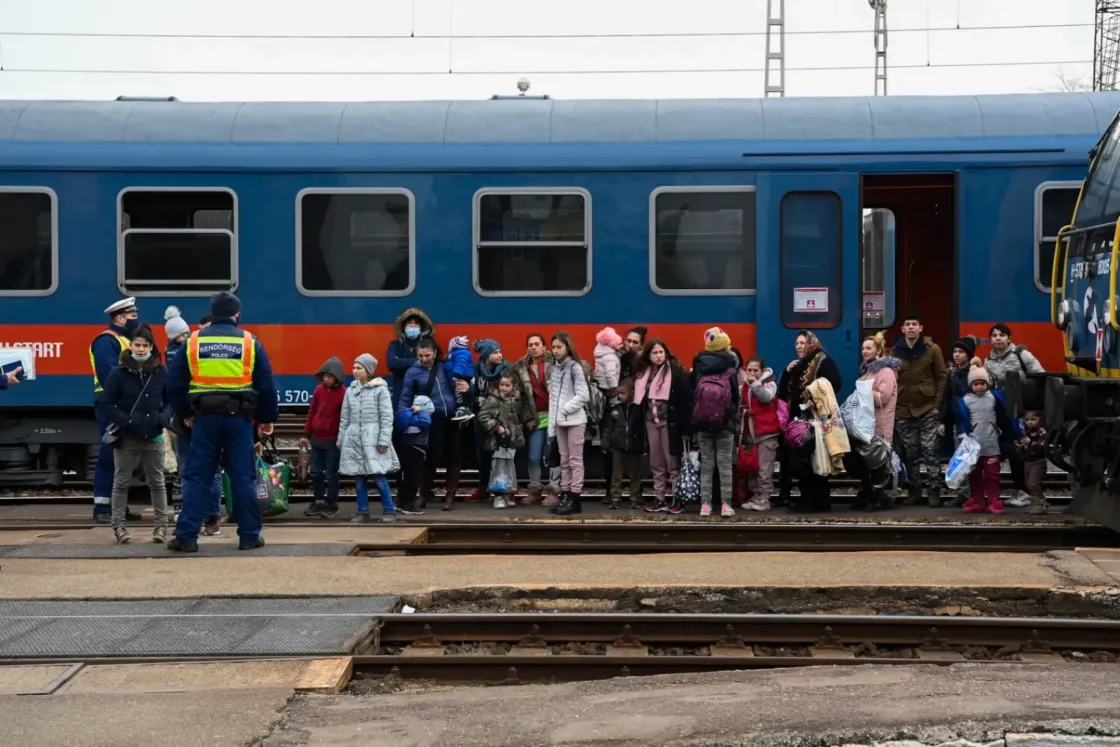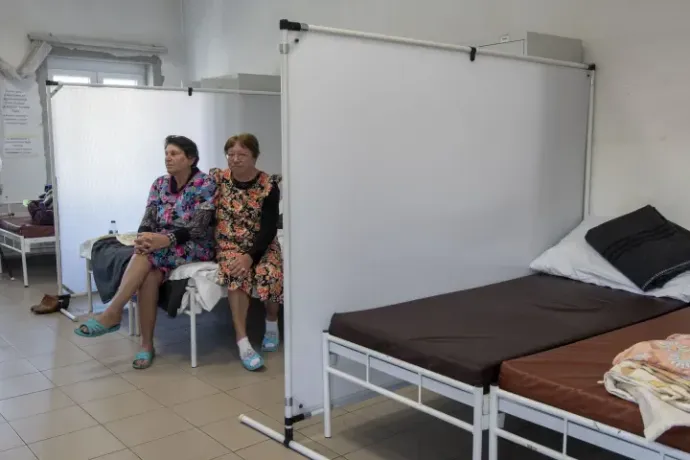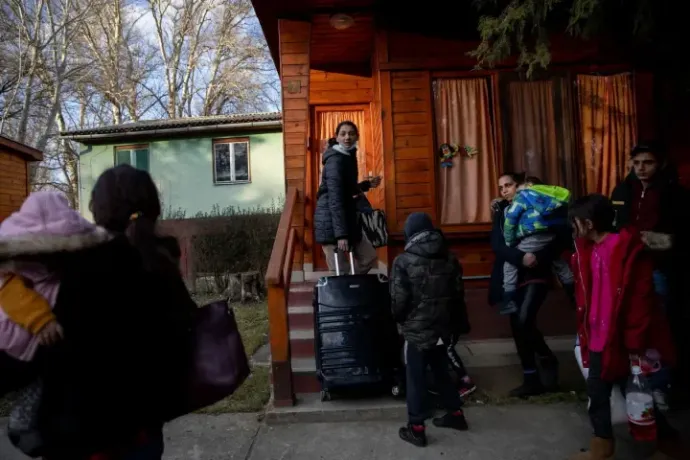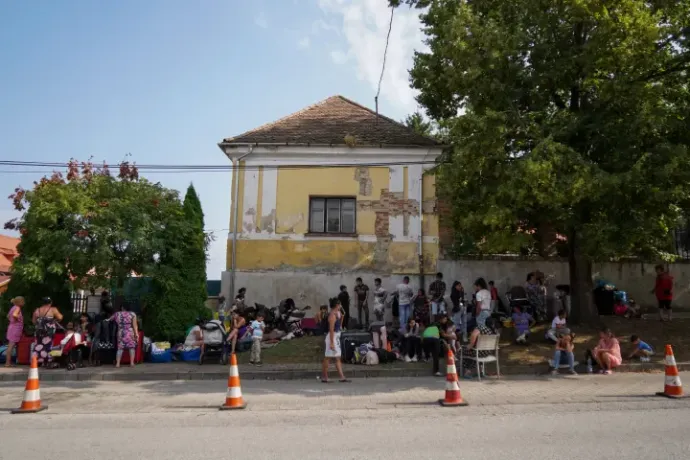Study reveals manifold difficulties of Ukrainian refugees' integration in Hungary

"In many cases, even a year and a half after the war had started, some government agencies and other state and municipal offices were not aware of the rights and services that refugees were entitled to, but the same was true for many healthcare institutions as well," a recent study prepared by Anikó Bernát and Zsófia Tomka has found. Their work, entitled "Ukrainian refugees in Hungary: opportunities and limitations of short- and long-term integration" examining the integration difficulties faced by Ukrainian refugees in Hungary was published in the 2024 Társadalmi Riport (Societal Report) by the Tárki Institute for Social Research.
Since the outbreak of the war in Ukraine, a record number of refugees have arrived in Hungary. At the time the survey was conducted, in October 2023, there were 35,000 refugees living in Hungary who had been granted the status of "temporarily protected individual". This figure does not include dual Ukrainian-Hungarian citizens (typically Hungarians from Transcarpathia), who were not entitled to temporary protection in Hungary due to their Hungarian citizenship.
The research was not able to draw on a representative sample, as there is essentially no comprehensive data available on refugees living in Hungary. However, the survey revealed that, as they put it, the refugee wave "caught the country practically unawares and unprepared, as it had been working on dismantling its refugee care system". As a result, in some areas, the refugees encountered anomalies which prompted them to fall back on the Ukrainian system, as much as it was functioning during the war, rather than rely on the Hungarian one. And, paradoxically, Hungarians in Transcarpathia were at a disadvantage because of their Hungarian citizenship.
Initial difficulties
The 2022 refugee wave brought about a turnaround in the Hungarian government's communication. While the systematic dismantling of the refugee care system has been part of the government's policy since 2015, "the Hungarian state has shown a much more tolerant attitude towards the Ukrainian refugees arriving in 2022, and was ready to help," the research says. According to the study, this was due to the fact that the arriving refugees were European, culturally and religiously similar to Hungarians, unlike the majority of those in 2015.
“Despite a more welcoming and cooperative attitude, the housing provision offered by the state was inadequate.”
The research also points out that the state-run system was not functioning properly, so NGOs, civil society and international organisations were trying to fill the void created by this – but they were not enough for the task. This was exacerbated by the government's step-by-step dismantling of an already depleted system of refugee care. One such step was taken last August, when a government decree was passed stipulating that only individuals originally from parts of Ukraine which were designated by the government as a "war zone" would be provided with housing. Since then, a group of Transcarpathian Hungarians have won a lawsuit against the government over the issue, after their leniency application had at first been rejected without justification.

According to the research, refugees arriving in the country experienced the hollowness of the system of refugee care from the very beginning: for example, when someone submitted a request for temporary protection status, they had to wait anywhere between 10 days and 6 months before it was granted. In addition, there was a "significant lack of information" about the rights that such a status guaranteed. “There were even cases where the government offices themselves were not aware of the automatic extension of the status, which was an essential piece of information on the subject.”
The Hungarian health care system
Of the households surveyed in 2023, among those who fled to Hungary, 80 percent were Ukrainian, 2,5 per cent Russian, 25 percent Hungarian and 5 percent Roma (the answers relating to identity were based on the household members' own classification, with multiple answers allowed). 99 percent of Hungarians and 94 percent of the Roma came from Transcarpathia. Every third household interviewed in the survey was from Transcarpathia. One in three refugee households reside in Budapest and 45 percent of them needed health care in the month prior to the survey.
For refugees, it would have been financially burdensome to receive private care. This is true both for those with temporary protected status and for those with Hungarian citizenship. For this reason, they opted for public health care, where they often found that other than themselves not being aware of exactly what they were entitled to, the health care institutions also were not aware of this. And even if a refugee had been aware of their rights, they were often unable to do anything about it "if the hospital, specialist clinic or the doctor was not sufficiently informed or cooperative".
Thus, a substantial number of Ukrainian refugees either received no care at all or only partial care. In addition, dual Ukrainian-Hungarian citizens faced even greater obstacles: hospitals required them to have a TAJ (health insurance) card, but to obtain one, they would have needed to either have a registered job or a permanent address going back at least a year. Neither of these were a realistic expectation in their case, especially at the beginning of the war, the research notes. Given the already existing problems of the Hungarian healthcare system, Ukrainian refugees ended up
"turning to the Ukrainian healthcare system which had been beleaguered by the war, as it was often still a simpler and safer option".
In practice, this meant online appointments, medicine prescribed in Ukraine and brought by a friend, or travelling to Ukraine for treatment. For example, as the research recalls, a 70-year-old male refugee was contacted by his doctor from Kharkiv for an online consultation because he had heard from other refugees that Hungarian health care was poor. According to the survey, 32 percent of refugee households include a chronically ill individual.
Integration and a dead end
In terms of housing, the survey found significant progress towards integration compared to 2022. While a significant proportion of refugees were living in communal accommodation shortly after the outbreak of the war, by 2023, 43 percent were living in their own households. But there were already marked disparities in housing options at the start of the refugee wave too. Where a refugee ended up was in part down to luck as well. Subletting was particularly difficult, and landlords were typically reluctant to rent to them. This especially affected dual nationals who could not receive temporary protected status:
“Hungarian citizenship, although a higher legal status, also carried unexpected disadvantages, despite the fact that in principle they have the same rights and are entitled to the same benefits as those with temporary protected status.”
– the study concluded. In the case of refugees coming from Transcarpathia, the discrimination was apparent as soon as they arrived at the BOK hall, (a sports centre which was the designated information centre upon arrival for Ukrainian refugees) where they were treated separately. "It is common practice to have Roma refugees live in poorer conditions, where a whole family is living in a single room in a refugee hostel or possibly a workers' hostel, with shared bathroom and kitchen facilities. These places are often in remote locations with poor access to transport, employment opportunities and other infrastructure, as a result of which these people are segregated, often among other Roma in similar situations." Even if one wanted to break out of this, it was not easy to do so because of the ever-present discrimination.

Major setbacks
At the time of the survey, 21 percent of the school-age Ukrainian refugee children were not in school. 69 percent preferred to participate in online education in the Ukrainian school system. Ukrainian refugees chose this both to ease the language barriers and because they mostly expected to return to Ukraine at the end of the war. As the research points out, a worrying figure is that the proportion of young people (aged 16-24) not in education in 2023 was 13 per cent: this is higher than the figure for the total Hungarian population (9.8 percent). It was only much later that initiatives such as the opening of Hungary's only Ukrainian-Hungarian bilingual school came along to address the problem.
Of the households surveyed, 71 percent had a job and 9 per cent did not: the latter figure is twice as high as the unemployment rate for the total Hungarian population (4.1 percent). Those who did have a job mostly worked in manufacturing (33 percent), but many also worked in construction and catering. As with education, Hungarian was a major difficulty for refugees in this area as well.
By the summer of 2023, nearly 70 percent of households were living on income from work. Since the beginning of their stay in the country, 52 percent of Ukrainian refugees received some form of state support. But by the month before the survey was conducted, only 26 percent were receiving any such assistance: "this data also points to a growing trend observable since 2023, namely, that the resources for supporting Ukrainian refugees are becoming increasingly scarce," the research says. However, all things considered, the 2023 figures suggest that
the average monthly per capita income among Ukrainian refugees was 144,000 forints, while the national average per capita income was 212,000 forints.
In an economic environment where housing and food prices had increased significantly, the monthly allowance the state provided for an adult with temporary protection status was HUF 22 800, while the monthly allowance for children was HUF 13 700. This meant that unemployed refugees could essentially only survive on the state-provided food rations and shelters located in "typically remote, infrastructure-poor areas and in very low-quality, overcrowded housing (...)".

According to the research, "there was no serious intention" on the part of the government to "systemically address the language problem which affected several areas". Apart from NGOs providing interpretation services, online translation tools and the few Hungarian language courses available, this obstacle remained insurmountable for Ukrainian refugees in Hungary. "The majority of these refugees never even had the chance to decide whether or not to start learning Hungarian." The study finally concluded that, even with all that the state institutions did do, "they failed to make a meaningful difference in these adverse situations, and this may have been partly due to the inadequacies of the refugee support services in the country, which had been deliberately dismantled in the recent past".
For more quick, accurate and impartial news from and about Hungary, subscribe to the Telex English newsletter!